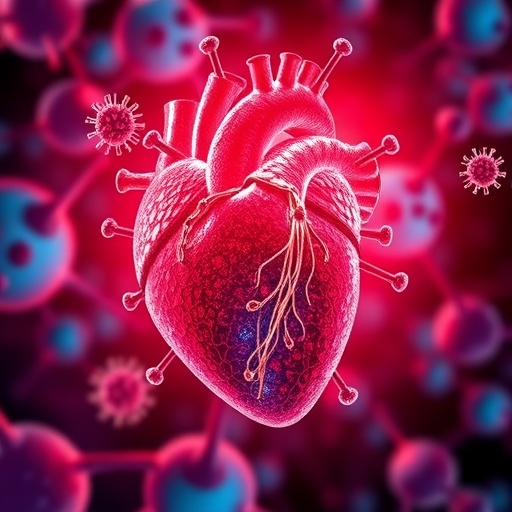In the exhilarating world of competitive ice hockey, the focus often lies on the athletes gliding across the rink, showcasing their astounding skills and physical prowess. However, an equally vital aspect often escapes the limelight—the medical care provided to spectators during major sporting events. In a revealing study led by researchers Bister, Toivo, and Hänninen, the dynamics of spectator medicine during the Men’s International Ice Hockey World Championships in 2022 and 2023 were meticulously examined. This innovative research not only sheds light on the health care frameworks employed at high-profile sporting events but also underscores the importance of preparedness in safeguarding public health during large gatherings.
Throughout the two championship years, a substantial number of spectators flocked to witness the gripping tournaments held across various venues. This overwhelming turnout necessitated a robust medical infrastructure to attend to potential health needs arising from the bustling environment. The awareness of spectator health has evolved in recent years as organizers recognize the significant impact of public health on the overall experience of attending sporting events. The researchers meticulously documented how teams of healthcare professionals, including doctors, nurses, and paramedics, were strategically positioned to manage any health-related incidents, no matter how trivial or severe.
Building an effective spectator medical response includes analyzing and addressing various potential health risks inherent in large crowds. The researchers found that while some health issues were indeed commonplace—such as heat exhaustion, dehydration, and minor injuries from falls or collisions—others presented more alarming dangers, including cardiac events and acute allergic reactions. This necessitated an extensive protocol geared toward rapid response and care delivery, ultimately optimizing survival rates and medical outcomes for spectators experiencing crises.
Comprehensive training programs for medical personnel involved were also highlighted in the study. Working at a venue with thousands of fans necessitates not only medical knowledge but also crisis management skills. Team members were trained to assess situations swiftly, make decisions under pressure, and collaborate efficiently with the wider medical emergency services. This fundamental aspect is crucial, as timely intervention can be a matter of life or death. The researchers underscored that integrated training is paramount for ensuring that medical teams are not merely effective in isolation, but are part of a cohesive system that aligns with local hospitals and ambulatory facilities.
Furthermore, one striking aspect of the research was the emphasis on preventive measures. Rather than solely reacting to incidents as they happen, the medical teams put significant effort into pre-emptive strategies designed to minimize risk. Educational initiatives directed towards spectators played a key role in this, with materials distributed to inform attendees about hydration, recognizing warning signs of exhaustion, and even health facilities available at the venue. Such strategies highlighted a proactive approach that can mitigate many of the health incidents that may otherwise occur during intense sporting events.
As the study noted, the presence of medical personnel at significant events also reassured spectators, fostering an environment where fans could focus on enjoying the game rather than worrying about their safety. This psychological aspect can’t be understated; the knowledge that trained professionals are on standby contributes to the overall enjoyment of the event. Additionally, medical teams often engage with fans in a friendly manner, helping to demystify their roles and establish a rapport that can ease anxiety among attendees.
A crucial finding from the researchers involved the integration of real-time data collection techniques. During the tournaments, medical staff employed technology to log incidents and track health trends among spectators. This analytical approach enabled the medical team to swiftly adjust their strategies according to emerging patterns, enhancing their ability to respond effectively to the on-going health dynamics of the crowd. Real-time statistics on incident rates proved invaluable, allowing for a dynamic assessment of healthcare needs throughout the championships.
The research also evaluated the impact of the COVID-19 pandemic on spectator medical practices. With lingering public health concerns, medical teams had to remain vigilant, implementing safety protocols such as social distancing, mask-wearing, and enhanced sanitation measures at venues. The researchers underscored how these additional layers of precaution shaped the spectator experience. More than ever, health professionals had to engage on a dual front: managing immediate medical needs while simultaneously addressing the broader implications of a pandemic.
Another notable point highlighted in the study is the collaboration between event organizers and healthcare providers. The researchers discovered that successful medical support hinged on grid coordination, where communication pathways between event planners and medical teams were crystal clear. This synergy ensured that potential health hazards were identified early on, leading to a more proactive and responsive medical infrastructure. Without this collaboration, the potential for lapses in care during critical moments could have significant ramifications.
Analyzing visitor feedback post-tournament allowed the researchers to glean insights into the spectators’ perceptions of the medical care. Majority expressed gratitude for the immediate availability of medical support, highlighting its influence on their overall experience. This data presented a strong validation for continued investments in spectator health services at major sporting events. Evaluating this response lays the groundwork for further enhancements in healthcare provisions at future events, ensuring they align with spectators’ expectations.
Additionally, the findings from this study may influence healthcare policies beyond the realm of sports. Stakeholders in various public event domains can learn from the insights gained, fostering improved medical readiness across numerous environments that experience crowd gatherings. This showcases the potential ripple effects of the research, leading to enhanced health frameworks that could be adapted by festivals, concerts, and other mass gatherings, thus protecting public health overall.
In closing, the comprehensive analysis of spectator medicine during the Men’s International Ice Hockey World Championships provides a framework that illustrates the complexities and necessities of managing health at large gatherings. The meticulous planning and execution of medical strategies, proactive education initiatives, and real-time assessments demonstrate that health care at such events is as vital as the sporting action itself. As spectators flock to arenas to cheer for their teams, knowing that robust medical support is readily available ensures that everyone can enjoy the thrilling experience without fear—ultimately merging the worlds of sports and health in a way that prioritizes safety and well-being.
Subject of Research: Spectator medicine in international ice hockey championships.
Article Title: Spectator medicine in the men’s international Ice Hockey World Championships in 2022 and 2023.
Article References:
Bister, V., Toivo, K.J., Hänninen, T.H. et al. Spectator medicine in the men’s international Ice Hockey World Championships in 2022 and 2023. BMC Health Serv Res 25, 1301 (2025). https://doi.org/10.1186/s12913-025-13504-z
Image Credits: AI Generated
DOI:
Keywords: Spectator medicine, ice hockey, health services, public health, large events.
Tags: analysis of spectator safety in ice hockeyemergency response in ice hockeyhealth care for sports eventshealth incidents during championshipshealthcare infrastructure in sportshealthcare teams at sports venuesimpact of public health on sports experiencesmanaging spectator health risksmedical preparedness for spectatorsmen’s ice hockey health trendspublic health at sporting eventsspectator medicine in ice hockey





